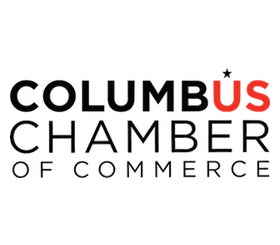The automotive industry heavily relies on custom sheet metal fabrication to produce key vehicle parts efficiently and at scale. The process is integral to overcoming production challenges, such as meeting tight deadlines and ensuring product accuracy.
I am Yoshihiro Hidaka, with experience in custom sheet metal fabrication. After founding Hidaka USA, Inc., I have dedicated over three decades to refining our processes to offer high-quality prototype and mass production services. Let's dig into how custom sheet metal fabrication supports industries beyond automotive.

Understanding Custom Sheet Metal Fabrication
Custom sheet metal fabrication is a process that transforms flat metal sheets into precise, durable components. This involves several key steps: cutting, bending, and assembling. Each step demands attention to detail to ensure that the final product meets specific requirements.
Cutting
Cutting is the initial step in custom sheet metal fabrication. It involves slicing the metal sheets into desired shapes and sizes. Techniques such as laser cutting, waterjet cutting, and plasma cutting are commonly used. Each method offers unique advantages:
- Laser Cutting: Provides high precision and is ideal for intricate designs.
- Waterjet Cutting: Uses high-pressure water, perfect for cutting through thick materials without heat distortion.
- Plasma Cutting: Uses electrically conductive gas to cut through metal quickly and efficiently.
Bending
Once the metal is cut, it is bent into the required shapes. This is typically done using a press brake machine. Bending involves creating angular bends and complex geometries. It is crucial for forming parts like dashboard panels and body brackets in the automotive industry. The precision in bending ensures that these components fit perfectly within the vehicle's design.
Assembling
The final step is assembling the cut and bent parts into a complete product. This can involve welding, riveting, or using adhesives. The choice of assembly method depends on the required strength and functionality of the final product. Welding is often used for its strength, especially in automotive applications where durability is key.
Precision and Durability
Precision and durability are the hallmarks of custom sheet metal fabrication. Precision ensures that every component fits and functions as intended, which is critical in automotive applications. Durability means that the components can withstand the stresses and strains of everyday use. This is achieved through careful material selection and meticulous fabrication processes.
Custom sheet metal fabrication is essential for producing high-quality automotive parts. It combines cutting-edge technology with skilled craftsmanship to create components that are both precise and durable. As a result, manufacturers can produce parts that improve the safety and performance of vehicles.

Key Processes in Custom Sheet Metal Fabrication
Custom sheet metal fabrication involves several key processes that transform raw metal sheets into functional components. These processes include cutting, forming and bending, and assembly and finishing.
Cutting Techniques
Cutting is the first step in the fabrication process, where metal sheets are sliced into specific shapes and sizes. Three primary cutting techniques are used:
- Laser Cutting: This method uses a high-powered laser to cut metal with extreme precision. It is ideal for creating intricate designs and is commonly used in automotive prototyping to ensure minimal waste.
- Waterjet Cutting: Uses a high-pressure stream of water mixed with abrasive materials to cut through metal. This technique is perfect for thick materials and does not cause heat distortion, making it suitable for sensitive components.
- Plasma Cutting: Involves an electrically conductive gas that quickly cuts through metal. It is efficient and effective for rapid production of large automotive parts like body panels.
Forming and Bending
After cutting, the metal is formed and bent to achieve the desired shape. This is typically done using a press brake machine, which can handle:
- Angular Bends: Essential for creating precise angles in parts such as dashboard stampings and interior brackets.
- Complex Geometries: Allows for the formation of intricate shapes necessary for custom automotive components.
Bending is crucial for ensuring that parts like radiator components and body panels fit perfectly within the vehicle's design.
Assembly and Finishing
The final stage in custom sheet metal fabrication involves assembling the cut and bent parts into a complete product. This can include:
- Welding: Techniques such as MIG, TIG, and spot welding are used to join metal parts. Welding provides the strength needed for automotive applications.
- Riveting: Offers an alternative to welding, especially when working with metals that are difficult to weld.
- Anodizing and Powder Coating: These finishing processes improve the durability and appearance of the metal components. Anodizing increases corrosion resistance, while powder coating adds a protective and aesthetic layer.
These assembly and finishing techniques ensure that the final product is both functional and visually appealing, meeting the rigorous demands of the automotive industry.
By combining cutting-edge technology with skilled craftsmanship, custom sheet metal fabrication produces components that are precise, durable, and essential for enhancing vehicle safety and performance.
Applications in the Automotive Industry
Custom sheet metal fabrication plays a vital role in the automotive industry. It is used to create essential components that ensure vehicles are both functional and aesthetically appealing. Let's explore some key applications:
Dashboard Stamping
Dashboard stamping involves shaping metal sheets into precise forms that fit seamlessly into a vehicle's interior. This process is crucial for producing dashboards that are not only visually appealing but also sturdy and reliable. Hidaka USA, Inc. specializes in aluminum dashboard production and robotic assembly, ensuring high-quality outputs for automotive interiors. This kind of precision is achieved through advanced stamping techniques that allow for complex designs and the integration of various features, such as air vents and control panels.
Radiator Components
Radiator components are essential for a vehicle's cooling system. Custom sheet metal fabrication is used to create radiator core supports and other parts that require high-volume production. These components need to withstand high temperatures and pressures, making durability a top priority. The stamping process ensures that each piece is made to exact specifications, providing the necessary support and alignment for the radiator assembly.
Body Panels
Automotive body panels are another critical application of custom sheet metal fabrication. These panels form the vehicle's exterior and must meet strict standards for strength, weight, and finish. The process involves shaping mild steel or aluminum into panels that fit together perfectly, providing both structural integrity and a smooth, polished appearance. Techniques such as laser cutting and fourslide stamping are often used to achieve the precise dimensions and complex curves required for modern vehicle designs.
Interior Brackets
Interior brackets are small yet crucial components that support various parts within a vehicle, such as seats, consoles, and electronics. These brackets must be strong and precisely made to ensure they fit and function correctly within the vehicle's interior. High-volume stamping and assembly processes are used to produce these components efficiently. Hidaka USA, Inc. excels in high-volume stamping and assembly of interior brackets, ensuring that each piece meets the exacting standards of the automotive industry.
By utilizing advanced techniques in custom sheet metal fabrication, automotive manufacturers can produce components that are both high-quality and cost-effective. This versatility allows for the creation of parts that improve vehicle performance, safety, and aesthetics, making custom sheet metal fabrication an indispensable part of the automotive industry.
Advantages of Custom Sheet Metal Fabrication
Custom sheet metal fabrication offers numerous benefits that make it a preferred choice for many industries, especially automotive manufacturing. Here's why:
Rapid Prototyping
One of the standout advantages is rapid prototyping. This process allows manufacturers to quickly create and test new designs, making it possible to iterate and refine products swiftly. With rapid prototyping, ideas can move from concept to reality in a fraction of the time it would take with traditional methods. This speed is crucial in the competitive automotive industry, where bringing innovative designs to market quickly can provide a significant edge.
Low Material Waste
Low material waste is another key benefit. The precision of custom sheet metal fabrication minimizes excess material, reducing costs and environmental impact. Techniques like laser cutting and CNC machining ensure that every piece of metal is used efficiently. This efficiency not only saves money but also supports sustainable manufacturing practices, which are increasingly important in today's eco-conscious market.
Scalability
Scalability is crucial for meeting the demands of large-scale production. Custom sheet metal fabrication processes can easily be scaled up to produce high volumes of parts without sacrificing quality. This scalability is essential for automotive manufacturers who need to produce thousands of components, such as dashboard stampings and body panels, consistently and reliably.
Cost-Effectiveness
Finally, the cost-effectiveness of custom sheet metal fabrication cannot be overstated. By combining rapid prototyping, low material waste, and scalability, manufacturers can achieve significant cost savings. The ability to produce high-quality components at a lower cost is a major advantage, especially in industries where price competition is fierce.
These benefits make custom sheet metal fabrication an attractive option for automotive manufacturers looking to innovate while maintaining efficiency and cost control. By leveraging these advantages, companies like Hidaka USA, Inc. can deliver high-quality products that meet the needs of their clients and stay ahead in the market.
Frequently Asked Questions about Custom Sheet Metal Fabrication
What are the main types of metal fabrication?
Custom sheet metal fabrication involves three primary processes: cutting, bending, and assembling.
- Cutting: This is the first step where metal sheets are cut into the required shapes. Techniques like laser cutting, waterjet cutting, and plasma cutting are commonly used. These methods ensure precision and reduce material waste.
- Bending: After cutting, the metal sheets are bent into the desired angles and shapes. This is often done using a press brake machine. Bending allows for the creation of complex geometries essential in automotive components like dashboard and interior bracket stampings.
- Assembling: In the final stage, the cut and bent metal pieces are assembled. This can involve welding, riveting, or other joining techniques. Assembly ensures that the components fit together perfectly, which is crucial for parts like radiator components and body panels in vehicles.
How is the cost of metal fabrication calculated?
The cost of metal fabrication is determined by several factors:
- Raw Material Cost: The type of metal used significantly impacts the cost. High-quality or rare metals are more expensive. The choice of material affects not only the price but also the durability and performance of the final product.
- Machining Cost: This includes the expenses related to cutting, bending, and assembling the metal. Costs can vary based on the complexity of the design and the precision required. Simpler designs are generally less costly to machine.
- Total Product Cost: This is the sum of raw material and machining costs, along with any additional finishing processes like anodizing or powder coating. Producing a large number of items can reduce the cost per unit due to economies of scale.
What is the difference between steel and metal fabrication?
Steel fabrication is a subset of metal fabrication that specifically involves the processing of steel. Steel is valued for its strength and durability, making it a popular choice in industries like automotive and construction.
- Steel Properties: Steel is known for its high tensile strength and resistance to deformation. This makes it ideal for applications requiring robust materials, such as car body panels and structural components.
- Specialized Techniques: Fabricating steel often requires specialized techniques due to its properties. For instance, certain welding methods may be necessary to ensure strong and reliable joints.
Metal fabrication, on the other hand, encompasses a broader range of materials, including aluminum, titanium, and various alloys. Each material has unique characteristics and may require different fabrication techniques to achieve the desired results.
By understanding these aspects, businesses can make informed decisions about their fabrication needs, ensuring they choose the most suitable materials and processes for their projects.
Conclusion
Hidaka USA, Inc. stands as a leader in custom sheet metal fabrication, offering best expertise and commitment to quality. Established in 1989, our facility in Dublin, Ohio, spans over 95,000 square feet and is equipped to handle both prototyping and mass production. Our dedication to precision and excellence is evident in every project we undertake.
Expertise and Quality
With over 30 years of experience, Hidaka USA, Inc. has honed its skills in producing high-quality metal parts and assemblies. Our team of professionals uses cutting-edge technology, including 2D/3D laser cutting and hydraulic pressing, to ensure that each component meets the highest standards. Our ISO 9001 certification is a testament to our rigorous quality management system, ensuring that every product is consistent and reliable.
On-Time Delivery
In today's manufacturing environment, timely delivery is crucial. At Hidaka USA, Inc., we understand the importance of meeting deadlines. Our efficient processes and responsive customer service ensure that your parts are delivered on time, every time. Whether it's dashboard stamping or body panel fabrication, we are committed to keeping your production lines running smoothly.
Commitment to Excellence
Our commitment to excellence extends beyond manufacturing. As a member of the Columbus and Dublin Chambers of Commerce, we are dedicated to supporting our local community and promoting American-made products. We take pride in our role in the automotive, mass-transit railcar, and motorsports industries, providing innovative solutions that drive success.
For businesses seeking a reliable partner in custom sheet metal fabrication, Hidaka USA, Inc. offers the expertise, quality, and on-time delivery you need. To explore how we can meet your specific requirements, visit our mass production page and find the difference that precision and dedication can make.








